The Door of No Return – Impressions of a Returning African from the Diaspora
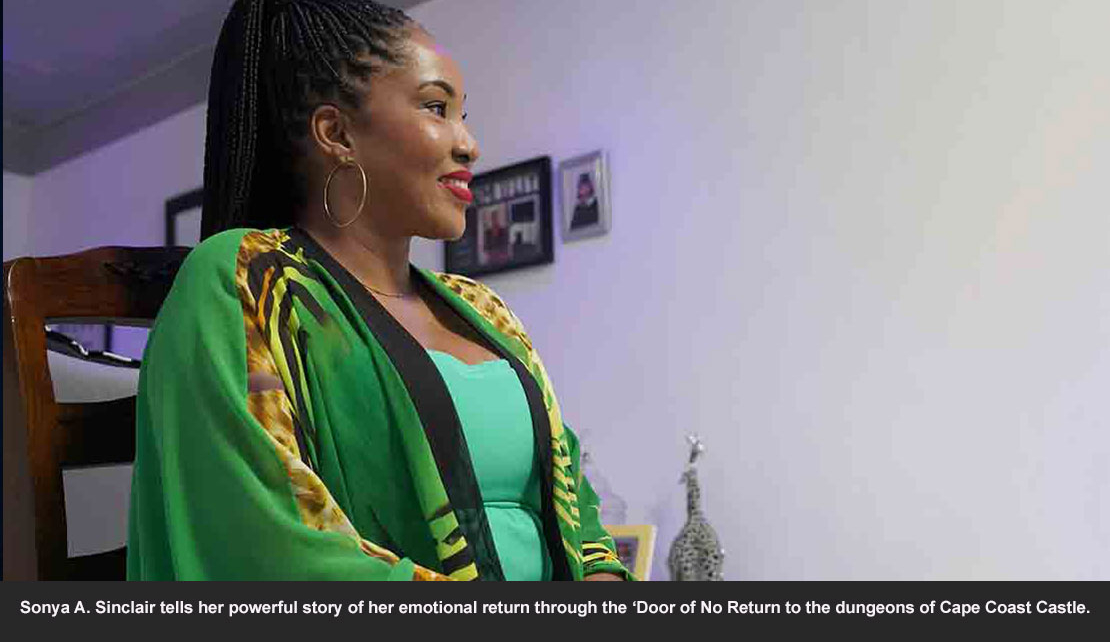
LUCEA, Hanover, December 1, 2023 - Travel is an elixir to a weary soul and a teacher to the curious mind. Ever so often in this doldrum we call life, the stars align and present remarkable opportunities to explore this diverse blue sphere that we call home.
In late October, the stars converged: Just like that, Africa beckoned, and presented an unplanned opportunity to attend the Digital Africa Diaspora Development Services conference on repatriation and the Accra Reparations Conference in Accra, Ghana in November, and I grabbed it.
My flight path took me from Jamaica to Canada, to Ethiopia and then to my final destination, Ghana. As my eyes first beheld the African continent, they were greeted by the resplendent skyline of Tunisia, a night canvas aglow with countless lights, each a beacon telling untold stories of souls akin to you and me, in the cradle of civilization.
Overwhelmed with a surge of emotions, I set foot on African soil at Addis Ababa’s Bole International Airport. The cool Ethiopian breeze embraced me, and the radiant African sun heralded my arrival Home. Yet, this was merely a prelude; my true destination, Ghana, awaited with emotions far deeper and profound than those evoked in Ethiopia.
Judith Thurman once said “Every Dreamer knows that it is entirely possible to be homesick for a place you’ve never been to, perhaps more homesick for familiar ground.” Touching down in Accra, I found this paradoxical sentiment to be my truth.
This distant, enigmatic land, replete with mysteries and wonders, felt both foreign and intimately familiar. The hustle and bustle of the city streets and warm smiles felt like a Welcome home from a long and weary journey. My heart was as full as my eyes were filled with tears.
In my travels, I ventured through Accra's teeming metropolis to the serene hills of Aburi. Yet, it was Cape Coast, a gem of a coastal town, that etched an indelible mark on my heart.
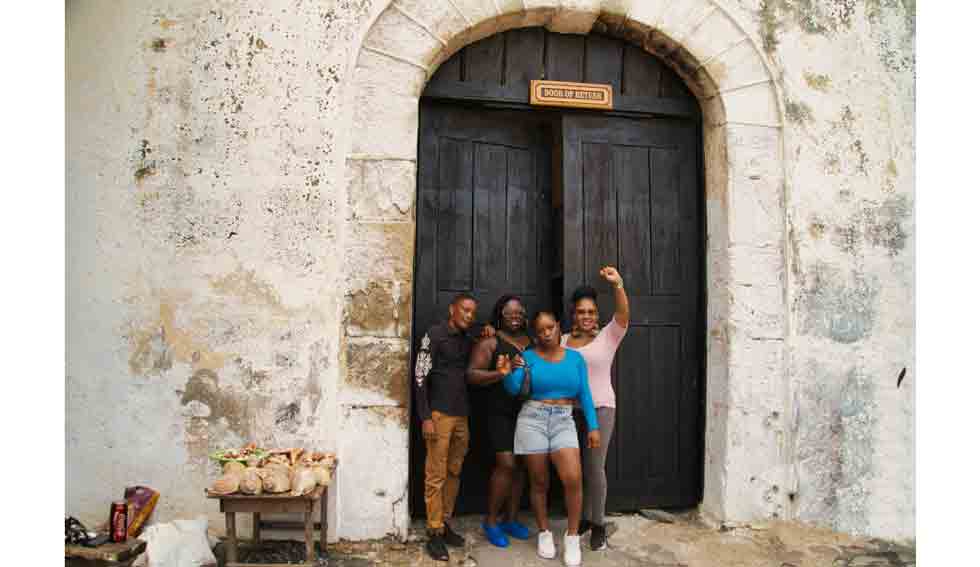
Unfortunately, on this trip we never got to see the Assin Manso River, and the Ancestral Slave Market. This was was one of the largest slave markets for gathering people who were sold into slavery during the infamous trans-Atlantic slave trade.
It was in this Assin Manso River that the slaves had their ritual last bath in African waters at a stream known as the “Ndonkosuo” before their barefoot treck to the Cape Coast or Elmina Castles for their trecherous middle passage transportation to the Americas and the Caribbean.
Enslaved individuals from different ethnic groups were brought here, their fates sealed by the iron chains of the slave traders. The river waters witnessed the tears, fears, and silent prayers of these individuals who were forcibly ripped from their homes.
From there, they had to walk miles to one of the slave castles, like the Cape Coast or Elmina Castle. Here, they were kept in chains for months while they waited for the right conditions for traveling across the Atlantic.
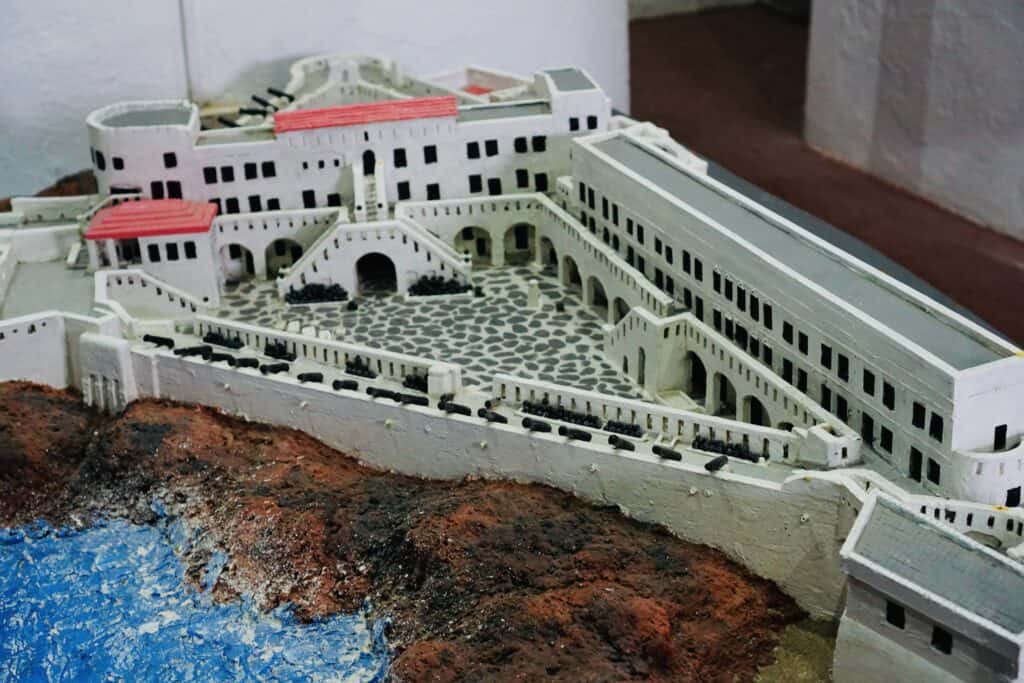
However, with the change of hands over the years, it underwent many modifications and expansions notably by the Dutch and British, which transformed it into a formidable stronghold.
The strategic location of Cape Coast Castle soon attracted the attention of other European powers. After changing hands several times in various conflicts, it was finally captured by the British in 1664.
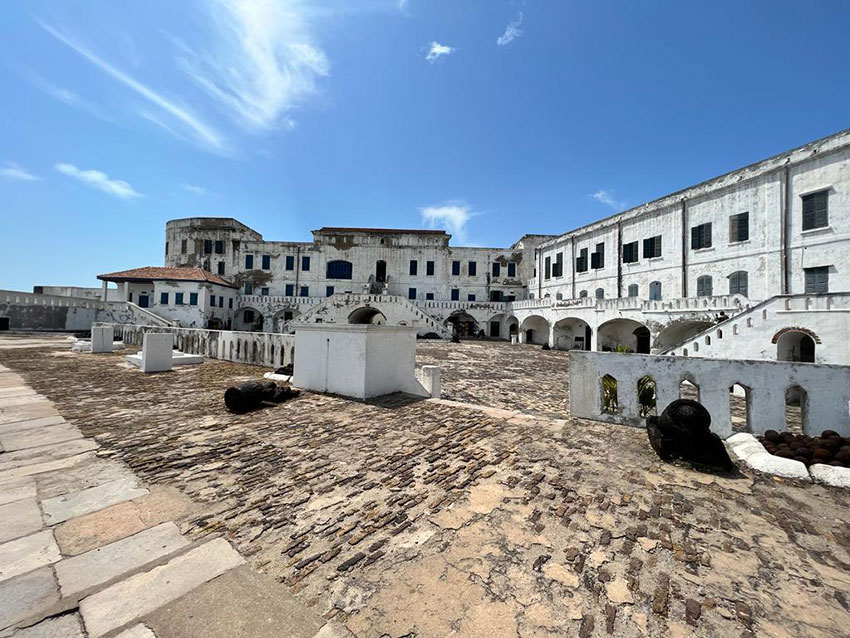
As I trodded the cobblestoned paths of Cape Coast Castle, I felt the sacredness of the ground, steeped in the blood, sweat, and tears of those who came before me. Entering the ironically named 'castle,' my soul echoed with the memories of countless men and women who had traversed these gates, shackled, lashed and herded into dungeons to await ships that would ferry them across the dreaded Middle Passage, to unknown lands, their captors called the New World.
As we embarked upon our journey through the castle, our knowledgeable guide Matilda narrated its history. Our small group of 10 bid the brilliant African sun au revoir as we began our descent into the Male Dungeon.
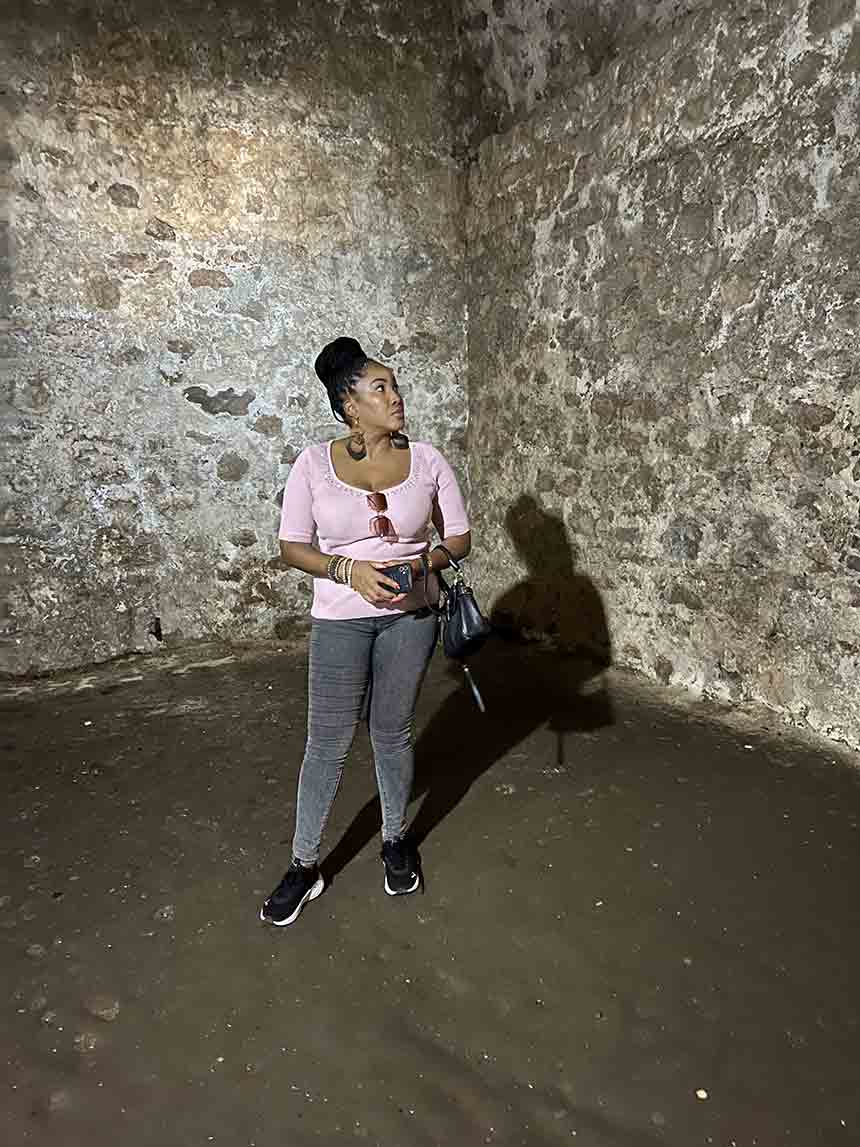
These were not prisoners of war; they were now to be sold as chattel slaves. There were no beds, no cots or chairs to sit or lay down. It was cold stone, putrid, excrement, coated ground, in which each inhabitant jostled to find an iota of comfortable space as they fought to survive to meet the next ordeal in the even more horrific hold of the slave ship for their transatlantic journey to hell.
They huddled together for an average of 30 days til the next ship arrived to fetch fresh human cargo for the plantations in the Caribbean and the Americas. There were no toilets, not even a bucket; only shallow trenches dug into the floors to transport bodily excrement, which proved inefficient and so men and women suffered the unspeakable indignity of living in their waste.
This was the first proving ground of the “survival of the fittest” Only one of the three chambers were “excavated” which meant we were walking on fossilised human waste rendering the floors smooth and slippery. There were marks of nearly four feet demarcation on the walls highlighting the height at which the excrement may have accumulated.
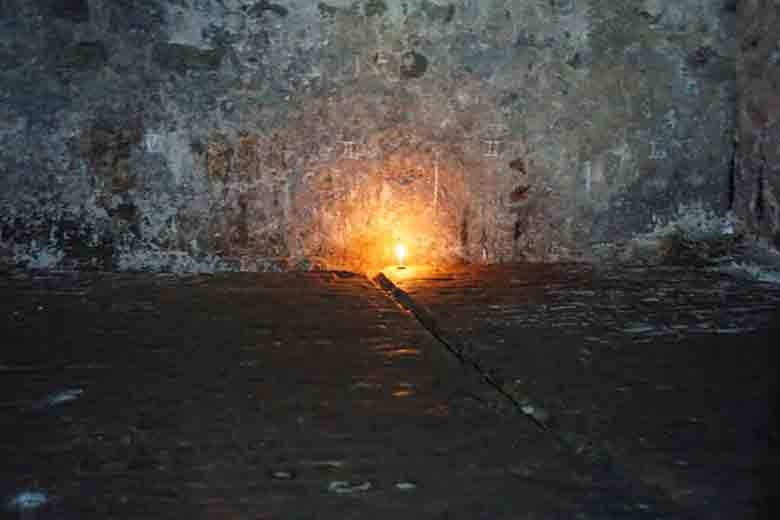
Ascending from the dungeons, the embrace of the sun's warmth was a poignant reminder of the preciousness of freedom, often taken for granted
We did not bask in the sun for very long as we were led to the Death cell reserved for the most rebellious and defiant among the enslaved. The ones who could know no other life than that of freedom. Those who entered this cell NEVER left alive. After the dungeon one could not fathom that there could possibly be another cell more inhumane until my 5 ft 3” frame bent to enter the dank, dark cell with no high window or spy hole. It has been 216 years since the abolition of the Trans-Atlantic Slave trade yet the putrid smell of desperation and death still permeated the air recalling the unspeakable, unimaginable horrors occupants of this cell endured as they were left to starve or suffocate to death.
Every unimaginable act of inhumanity was perpetrated against the enslaved at that the imposing whitewashed fortress called the Cape Coast Castle, including rape in all its forms. Rebellious and recalcitrant African women were confined to a separate cell in the hope of breaking their powerful spirits, and given just enough food and water to ward off starvation through a small slot in the wall.
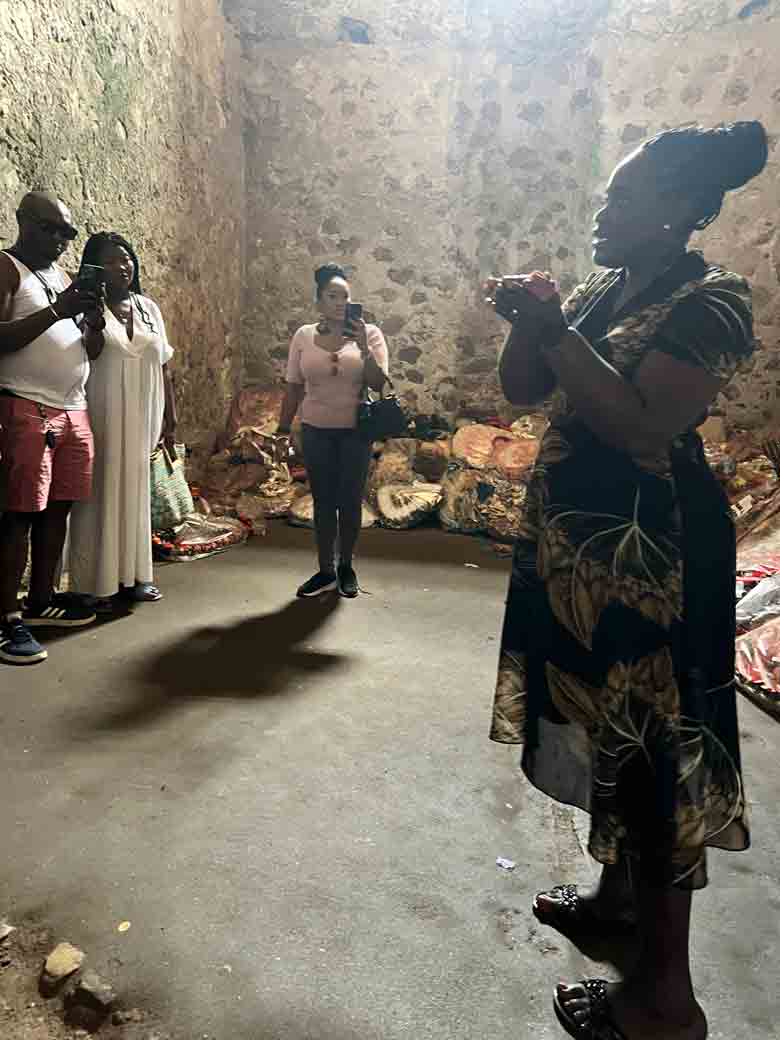
I imagined the opulent and ornate furnishings which must have decorated his apartments, exquisite hand embroidered drapery adorning the windows that open to magnificent vistas of the battalions below.
As the sun sets over the picturesque Atlantic Ocean, with its waves crashing against the moorings of the harbour along the infamous Gold Coast overlooked by the infamous castle, the Governor would step onto his balcony in the evenings to choose a ravishingly nubile enslaved female from the yard below to defile. It was a tale of two realities.
While the captors reveled in finery and “worshiped” in the Anglican church atop the male dungeons, praying to God to pour countless blessings upon them, an equal amount of men, women and children were sold at the auction blocks to be shepherded through the colossal wooden Door of No Return. It was so named as never would anyone who exited that door in chains, would ever again set foot back on African soil.
As I approached this door my tears flowed freely as the anger stirred in my heart and my soul upon the reminder that this barbarity did not end here. The voyage of cruel inhumanity had just begun.
400 hundred years of unmitigated horror protected by the legal system. Yet in the midst of my anger, I felt an overwhelming sense of strength and empowerment; I am a descendant of a survivor.
My ancestors walked through that door never again to touch African soil. But their spirit returned with me as this little girl from Hanover, Jamaica crossed the threshold of the Door of Return signaling our homecoming. In the words of Kwame Nkruhmah “I am not African because I was born in Africa, but because Africa was born in me.”
As we walked back towards the courtyard, once a marketplace for human lives, I felt a surge of defiant pride; our little group with fists raised chanting Black is Beautiful, with a beauty defined not only by beauty but also character and resilience.
Despite the horror and degradation, the centuries of inhumanity, in spite of the physical and psychological torture, we still survived. Scarred and bent but Unbroken, Strong and Unapologetically Black!

 Ar
Ar  En
En